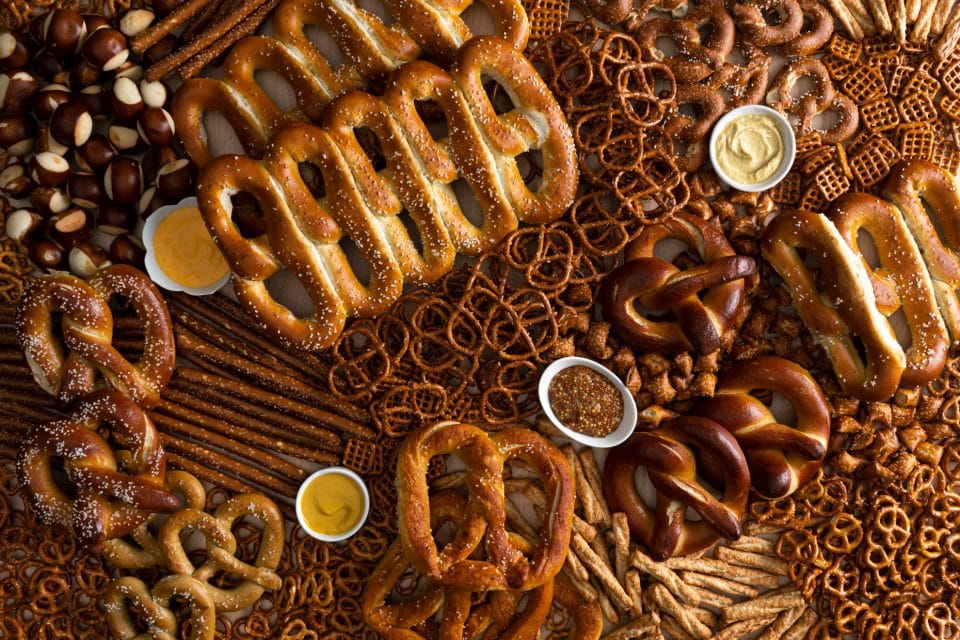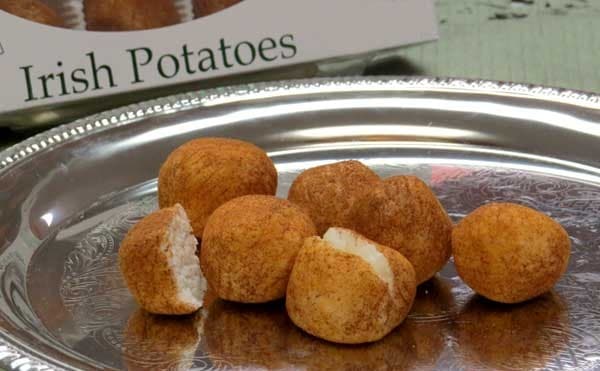If you like niche, simple, old-school delights, we’ve got just the food icon for you. Perhaps you’ve never heard of tomato pie. This savory dish with Italian roots is scarce outside of SEPA, with Philadelphia helping to put it on the map in the early 20th century. Nonetheless, those who love it really love it.
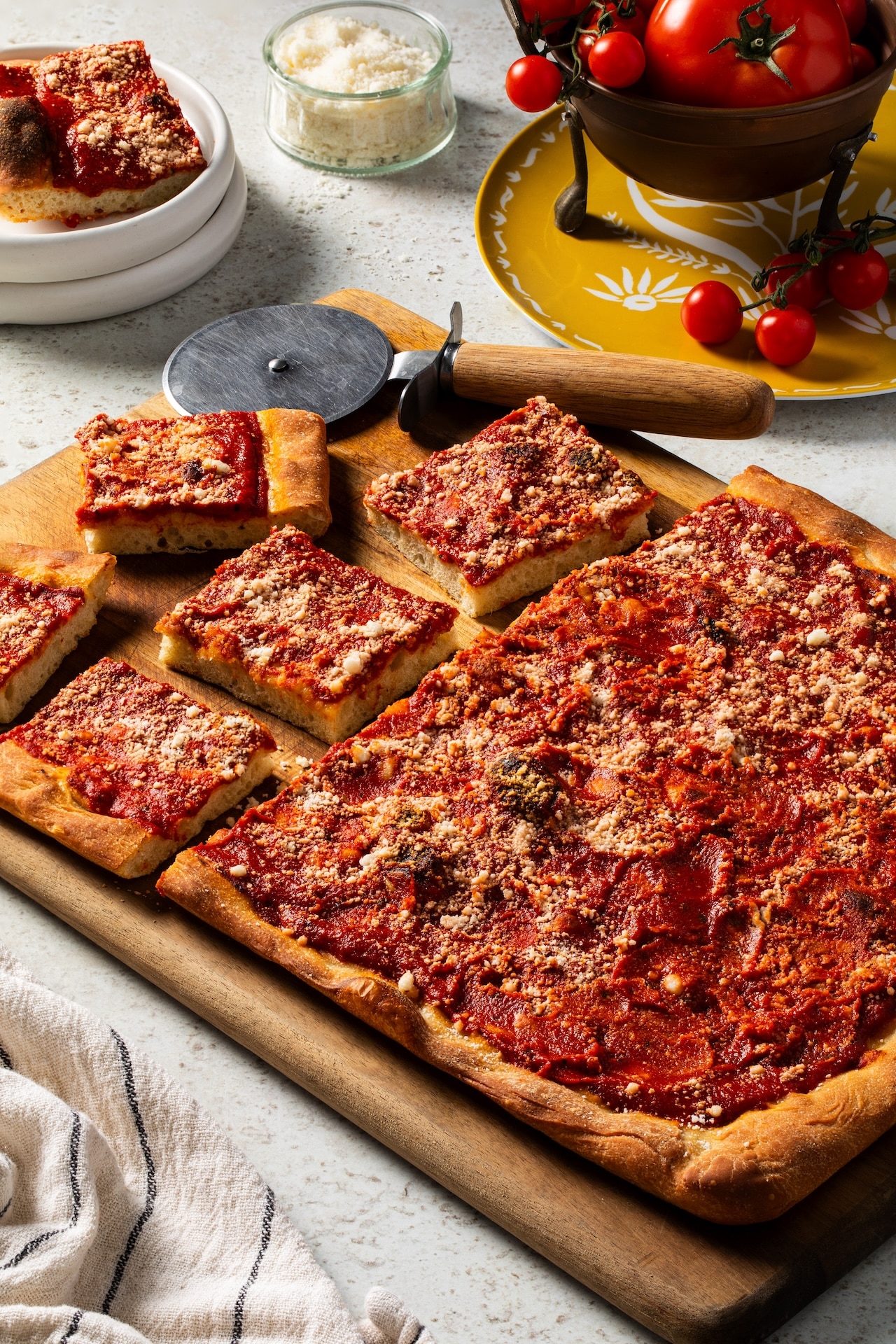
Tomato pie, Pennsylvania’s version, is kind of like pizza, but served at room temperature and without melted mozzarella. It’s also thick, like Sicilian-style ‘za, and usually rectangular. And, it totally works, marrying sweet tomato tang with soft, chew dough. Tomato pie is a beloved staple in Pennsylvania food culture as a no-fluff, richly flavored and satisfying casual fare.
What is Tomato Pie?
The term “tomato pie” can refer to a number of foods, falling under two broader categories that differ greatly.
Southern tomato pie is found throughout the Carolinas and southeastern parts of the U.S. It’s round and baked in a flaky pie shell, resembling a quiche or other savory pies. Southern tomato pie is filled with primarily chopped tomatoes, mayonnaise and cheese for a sky-high flavor index.
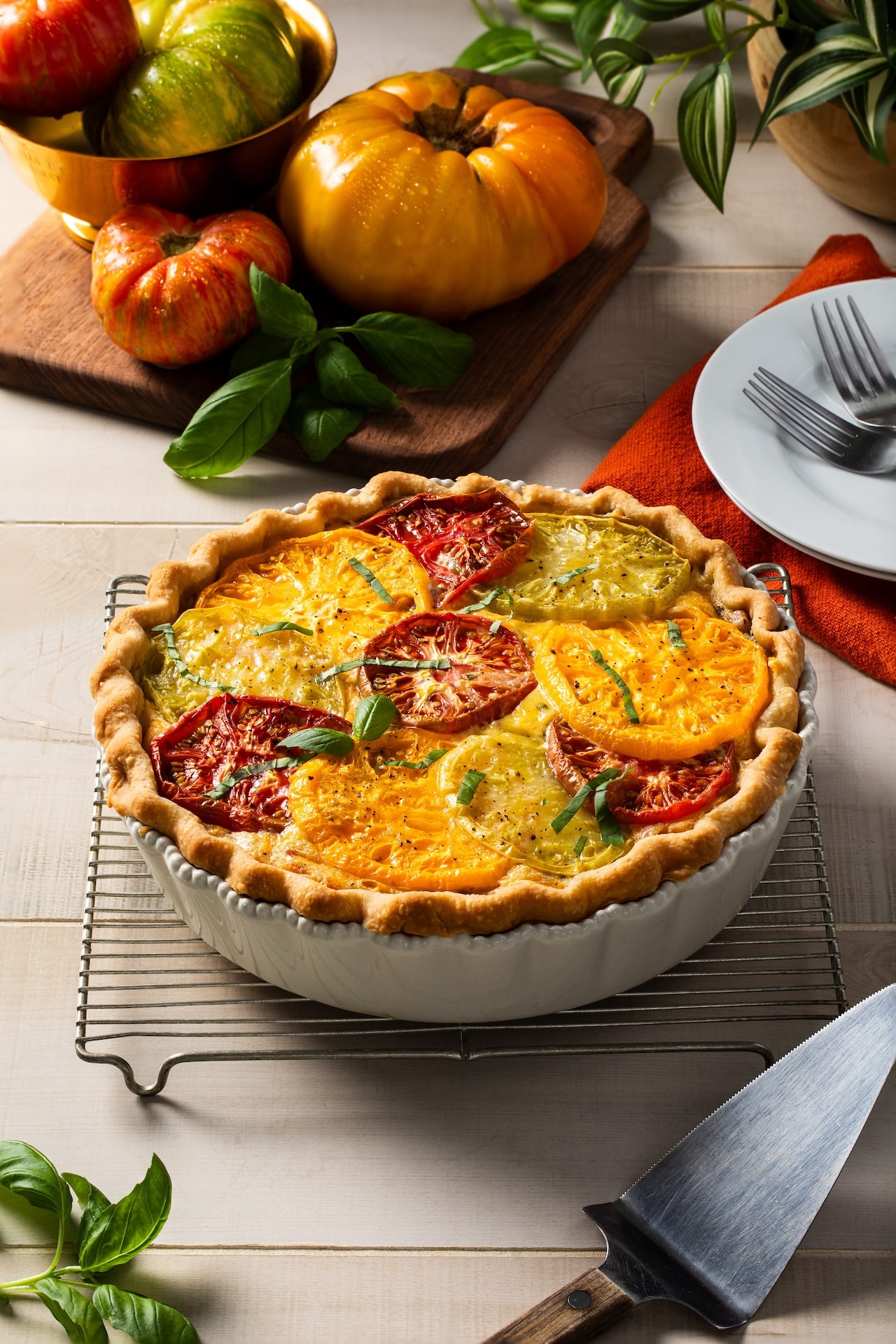
Southern Tomato Pie, which differs from the Pennsylvania kind
The tomato pie we’re talking about is quite different and often considered Italian or Philly tomato pie. It’s essentially a spongy, rectangular focaccia bread topped with tomato sauce (or, gravy) and sprinkled with a bit of hard, salty cheese like Parmesan. People enjoy it at room temperature, or even chilled, cut it into square pieces and served as a side dish or a whole meal. This is the tomato pie we’ll be referring to from here on out.
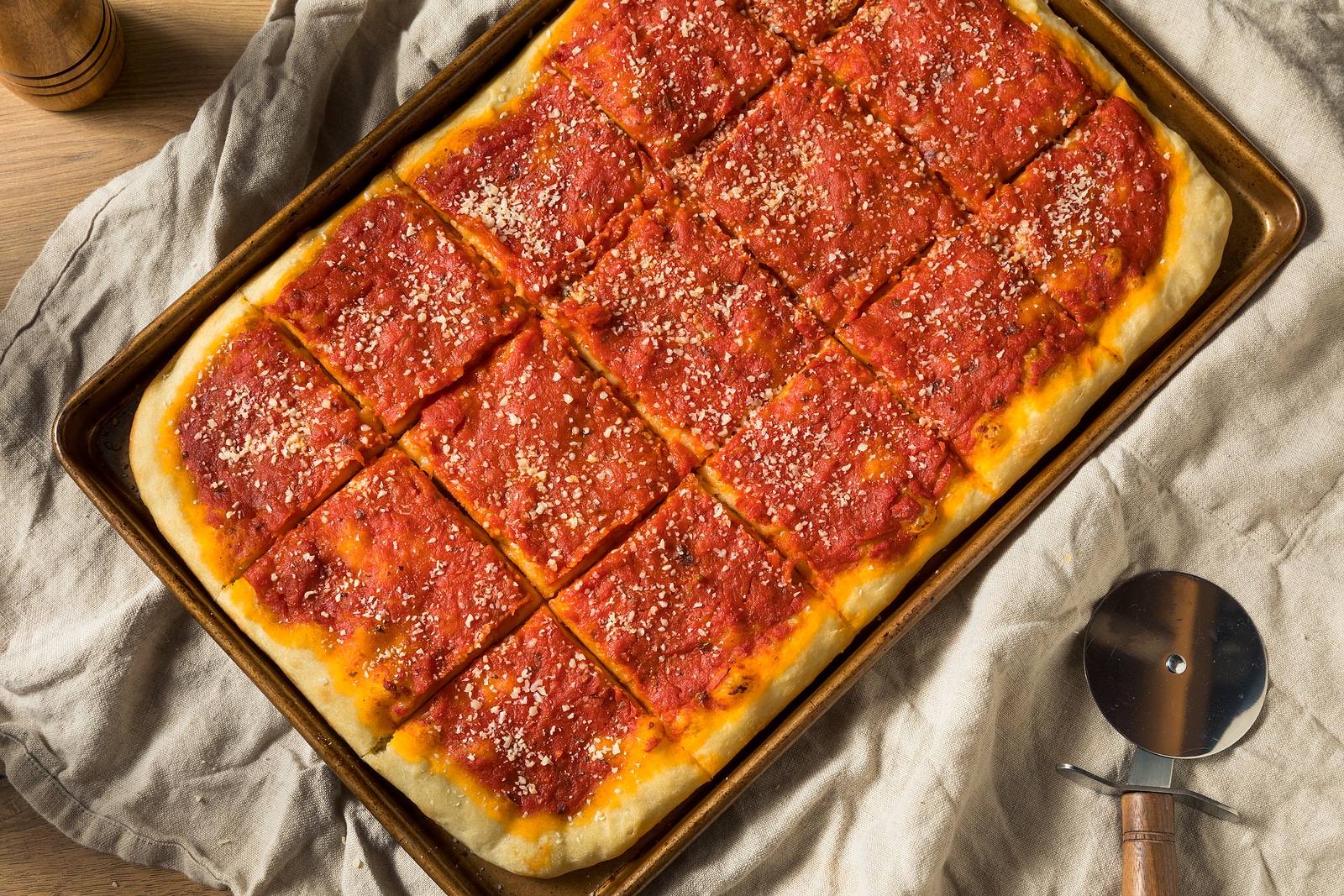
Philadelphia-style tomato pie
If you travel a bit, you’ll find spin-offs like the Trenton version, which is round and Neapolitan-style, sort of a cooled pizza with the sauce on top. The Rhode Island variety is cut into strips and called, appropriately, pizza strips. Both share ingredients and serving temperature with “our” tomato pie, which is also very popular in Utica, New York.
The History of Tomato Pie
Tomato pie was developed by Italian Americans in the Northeast U.S. and probably most resembles the Sicilian street food, sfincione, likely made here by Italian immigrants before morphing into today’s version. Sfincione has the same airy crust and tomato topping, but also has a layer of onions and anchovies, unlike the simpler U.S. version.
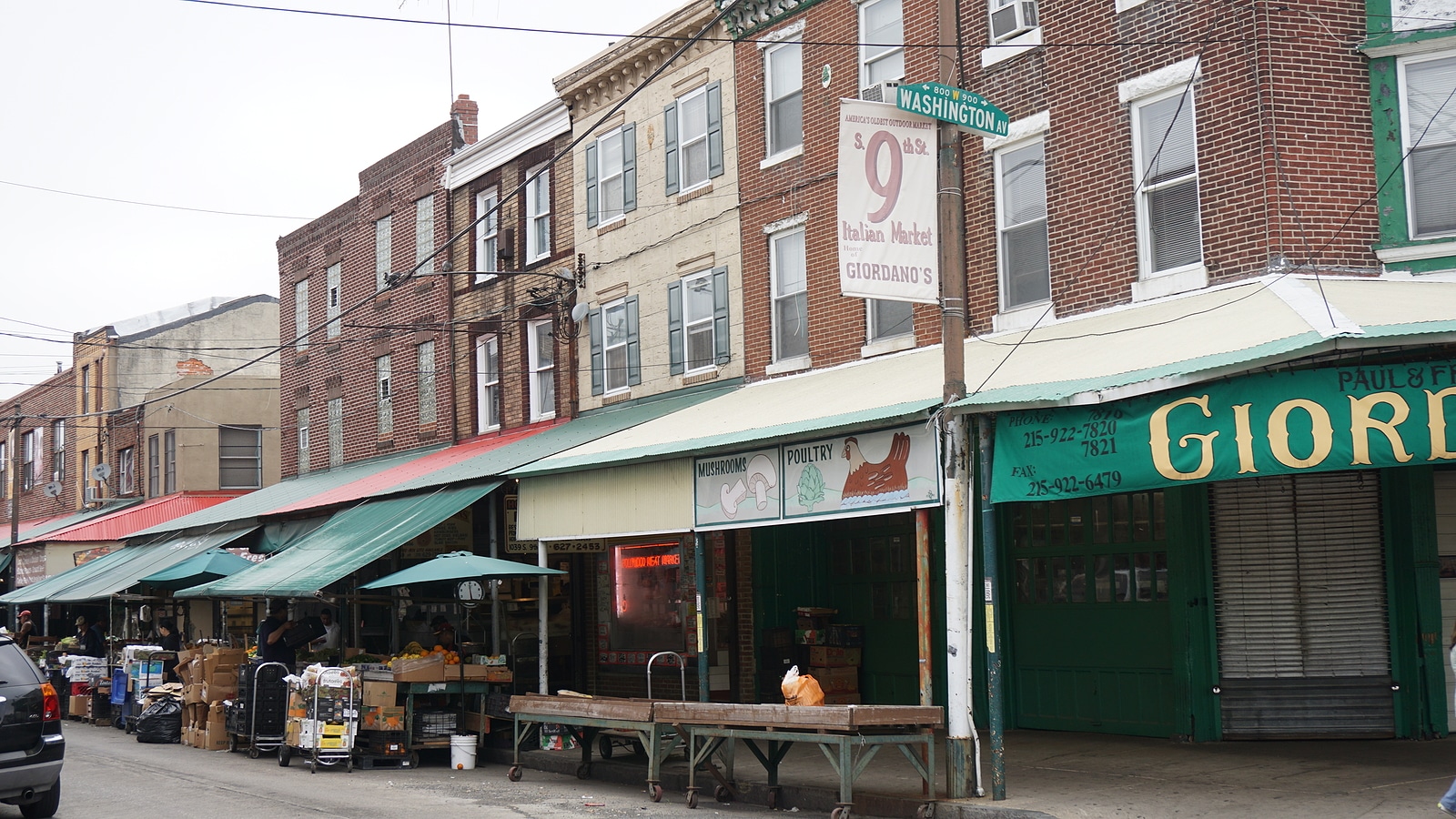
The Italian Market in Philadelphia
It’s earned a few nicknames including “Grandma Pie,” as recently immigrated Italian matriarchs in the early 20th century would make this special fare at home, and “Church Pie” as it was a favored Italian grab-and-go delight following church services. Square pizza and red pie are other monikers with more obvious linguistic origins. Italian bakeries were said to have originally made tomato pie with leftover tomatoes and dough that would otherwise go to waste, but the pies quickly became popular enough to demand daily baking.

Tomato pie is made with dough, gravy and cheese, each providing ample room for fine-tuning, special ingredients and a baker’s touch. The dough is typically composed of flour, yeast and lots of water, which create little pockets for a spongy effect when baked. The dough is spread on a greased, rectangular pan, sometimes baked part-way first and then topped with homemade red sauce, sprinkled with a bit of hard, salty cheese and baked to a golden-brown. Let it cool, slice a square and enjoy!
Where to Get It
The pies served today are nearly identical to the originals baked in brick ovens by Italian immigrants in South Philadelphia a century ago. Tomato pie has been a Philadelphian staple for well over 100 years and the source of the “best” pie is hotly debated.
One of the oldest and tastiest tomato pie institutions around is Ianelli’s Bakery, which has made them since 1910. Third-generation Ianelli’s maker Vincent Ianelli only opens his doors 15 days a year, so in-house enjoyment is rare, but you can order the iconic pies, made with the original recipe, via Goldbelly any time with an iconic price tag to match.

A legendary tomato pie at Sarcone’s Bakery
Another legendary local go-to in the Italian Market is Sarcone’s, with a crispy crust and juicy center. Nearby old-school New York Bakery is also popular, with to-go pies only at 2215 S. 11th Street. Head to Northeast Philadelphia to try sweet-sauced Gaeta’s while you’re in town. You could spend a week eating Philly tomato pies and not cover them all.
A bit outside the city, you’ll find Corropolese in Norristown, Audubon and Limerick. Considered the gold standard by many, it comes with a variety of topping options, or you can stick to the classic, also available on Goldbelly. Another ‘burbs favorite is Carlino’s in Ardmore and West Chester, with a chunkier tomato gravy consistency that’s downright delectable.
Finding tomato pie outside of the Philadelphia region can be tricky, but it’s not impossible.
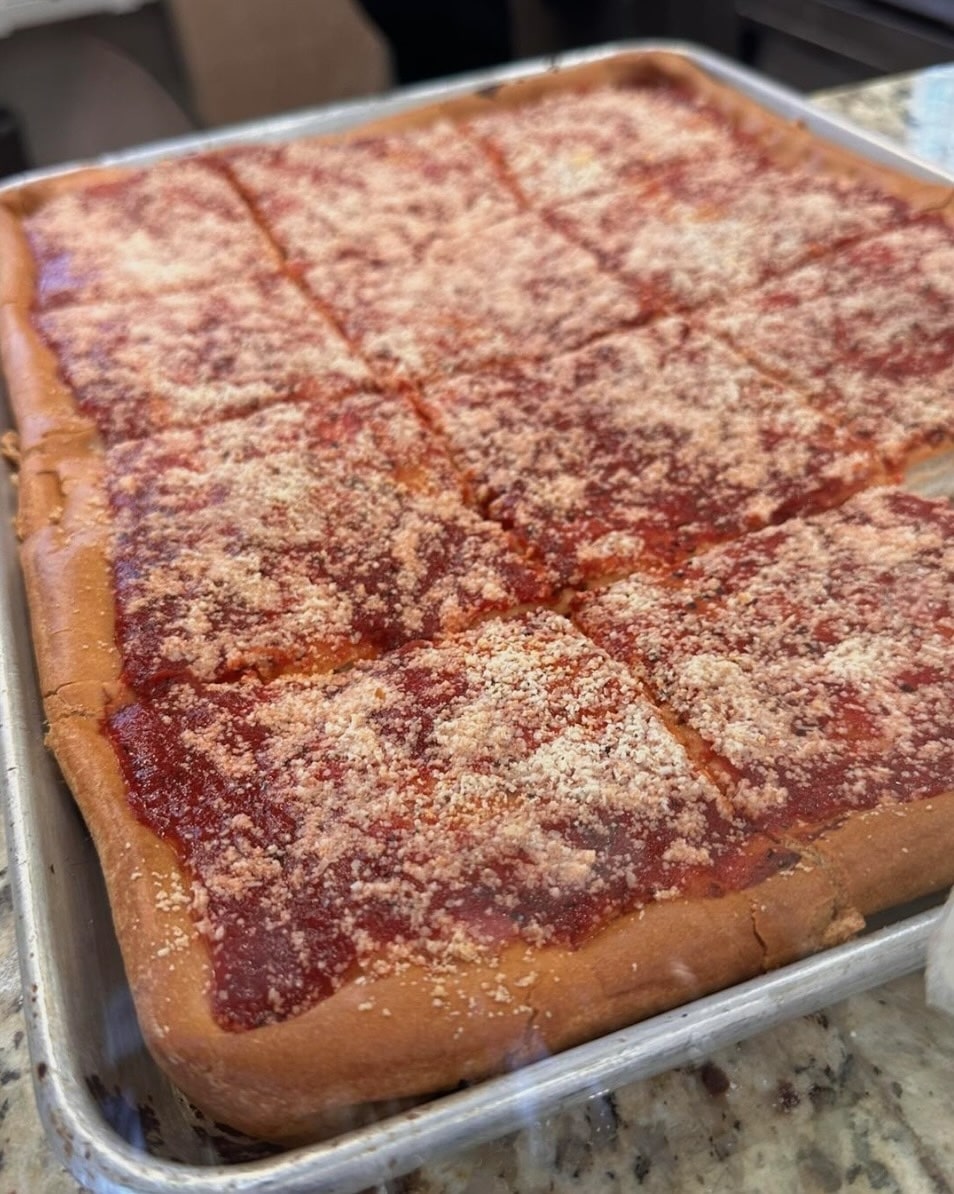
Tomato pie at Two Fat Guys and an Oven
Near Pittsburgh, Caliente Pizza and Draft House in Sewicky serves Grandma Pies, like Backyard Grandma with cherry tomatoes, peppers, arugula and cheese, and create your own styles, too. A bit north, try the Home Style pizza at Two Fat Guys and an Oven, which serves 12 and can be ordered online, or at its New Castle location.
In central Pennsylvania, Thom’s Bread makes sheets for preorder, and the Beer Fridge Lancaster occasionally dishes up a great one, too. You can also find Corropolese’s pies at various spots, like the Always Never Done market in Landisville, where they’re delivered fresh on Fridays.
In the Lehigh Valley and NEPA region, check out Easton Baking Company, which serves a great, traditional tomato pie, beloved by those in the know in that area. Pizza Pie-O-Near in Drums also offers a Tomato Sicilian pizza with pomodoro sauce, basil, garlic and Parmesan. And, between Allentown and Philly, Taormina’s Pizzeria in Dublin offers a Sicilian Tomato Pie, with marinara sauce, basil, olive oil and sprinkled Parmesan cheese.
Do you have a favorite tomato pie? Is this cuisine new to you? Let us know in the comments, and join the conversation on the PA Eats Facebook and Instagram pages!
- Feature and first two photos: Dish Works
- Aerial view of sliced pie: Bigstock
- All other photos: courtesy of the respective businesses

